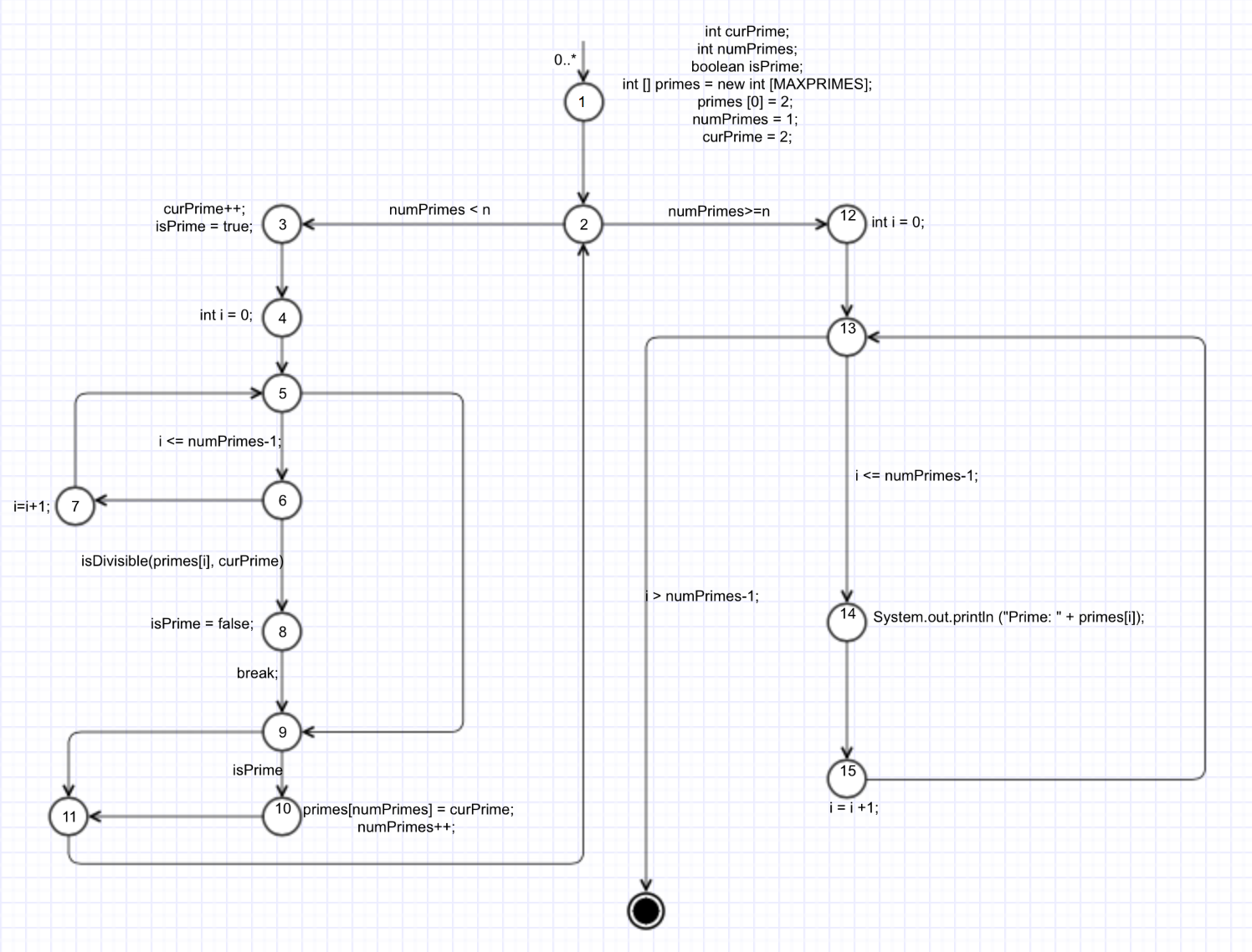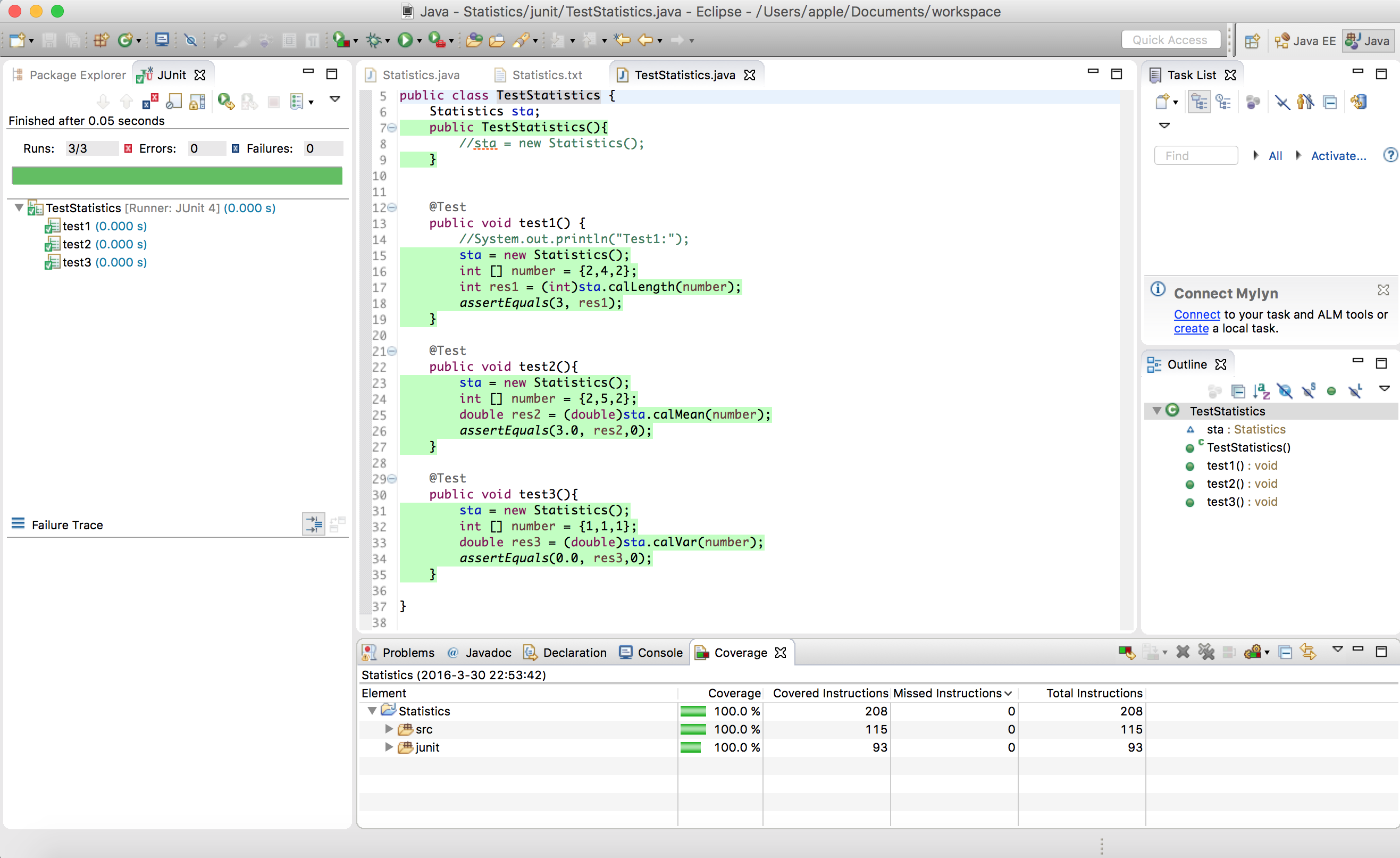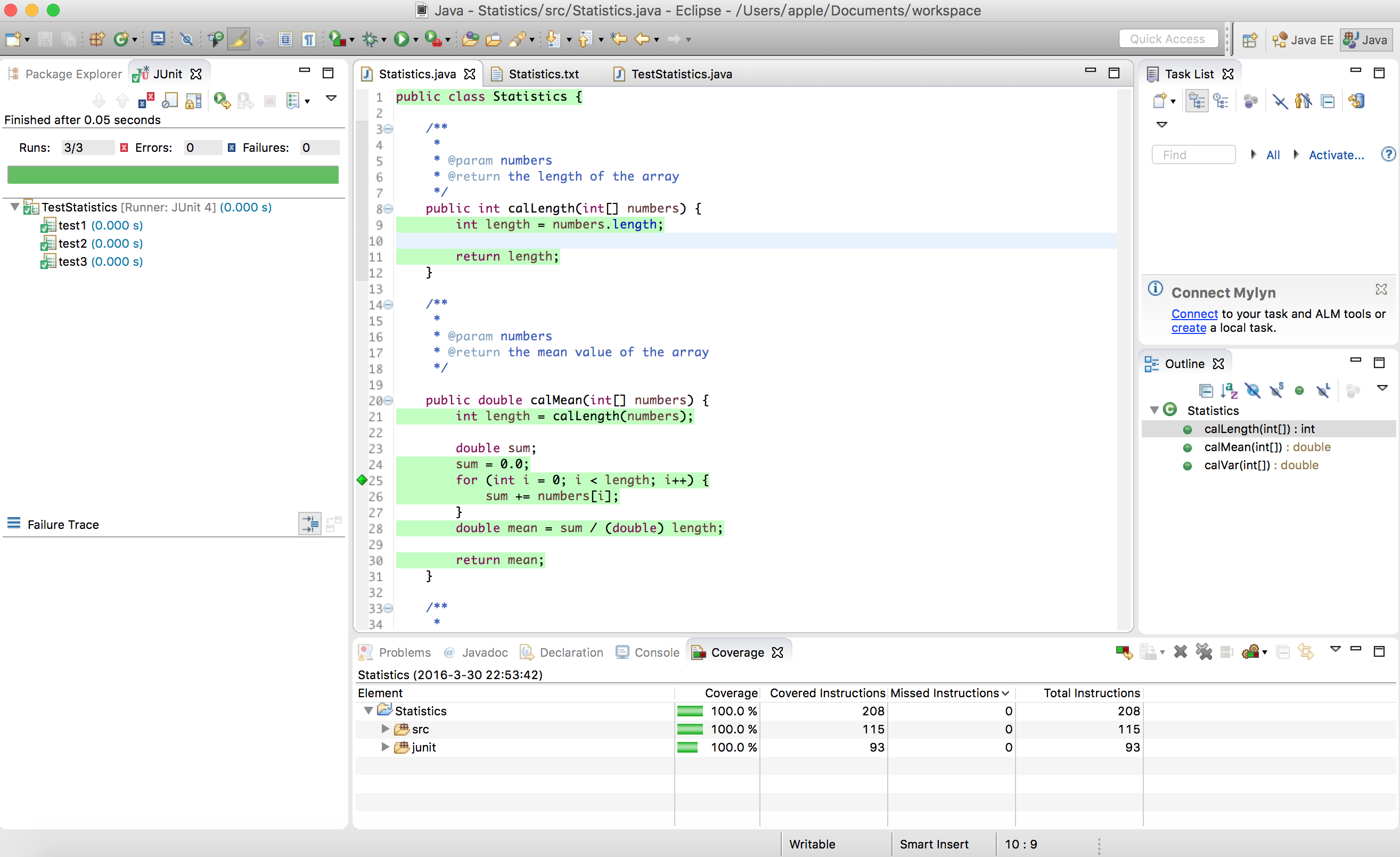使用方法printPrimes()完成(a)~(f)题:
代码如下:
1 /******************************************************* 2 * Finds and prints n prime integers 3 * Jeff Offutt, Spring 2003 4 ******************************************************/ 5 public static void printPrimes (int n) 6 { 7 int curPrime; // Value currently considered for primeness 8 int numPrimes; // Number of primes found so far. 9 boolean isPrime; // Is curPrime prime? 10 int [] primes = new int [MAXPRIMES]; // The list of prime numbers. 11 12 // Initialize 2 into the list of primes. 13 primes [0] = 2; 14 numPrimes = 1; 15 curPrime = 2; 16 while (numPrimes < n) 17 { 18 curPrime++; // next number to consider ... 19 isPrime = true; 20 for (int i = 0; i <= numPrimes-1; i++) 21 { // for each previous prime. 22 if (isDivisible(primes[i], curPrime)) 23 { // Found a divisor, curPrime is not prime. 24 isPrime = false; 25 break; // out of loop through primes. 26 } 27 } 28 if (isPrime) 29 { // save it! 30 primes[numPrimes] = curPrime; 31 numPrimes++; 32 } 33 } // End while 34 35 // Print all the primes out. 36 for (int i = 0; i <= numPrimes-1; i++) 37 { 38 System.out.println ("Prime: " + primes[i]); 39 } 40 } // end printPrimes
(a) 控制流图:

(b) 考虑测试用例 t1=(n=3) 和 t2=(n=5),当一个错误是数组越界错误时,t2比t1更容易发现错误。
(c) 当numPrimes < n时,会通过while循环体,所以当n=1时,可以不通过while循环。
(d)
节点覆盖:{1,2,3,4,5,6,7,8,9,10,11,12,13,14,15,16}
边覆盖:{(1,2),(2,3),(2,12),(3,4),(4,5),(5,6),(5,9),(6,7),(6,8),(7,5),(8,9),(9,10),(9,11),(10,11),(11,2),(12,13),(13,14),(14,15),(15,13),(13,16)}
主路经覆盖:
{(1,2,3,4,5,6,7),
(1,2,3,4,5,6,8,9,10,11),
(1,2,3,4,5,6,8,9,11),
(1,2,3,4,5,9,10,11),
(1,2,3,4,5,9,11),
(1,2,12,13,14,15),
(1,2,12,13,16),
(2,3,4,5,6,8,9,10,11,2),
(2,3,4,5,6,8,9,11,2),
(2,3,4,5,9,10,11,2),
(2,3,4,5,9,11,2),
(3,4,5,6,8,9,10,11,2,12,13,14,15),
(3,4,5,6,8,9,11,2,12,13,14,15)
(3,4,5,6,8,9,10,11,2,12,13,16)
(3,4,5,6,8,9,11,2,12,13,16),
(3,4,5,9,10,11,2,12,13,14,15),
(3,4,5,9,11,2,12,13,14,15),
(3,4,5,9,10,11,2,12,13,16),
(3,4,5,9,11,2,12,13,16),
(5,6,7,5),
(6,7,5,9,10,11,2,12,13,14,15),
(6,7,5,9,11,2,12,13,14,15),
(6,7,5,9,10,11,2,12,13,16),
(6,7,5,9,11,2,12,13,16),
(14,15,13,16),
(13,14,15,13),}
*实现主路经覆盖的例子:

